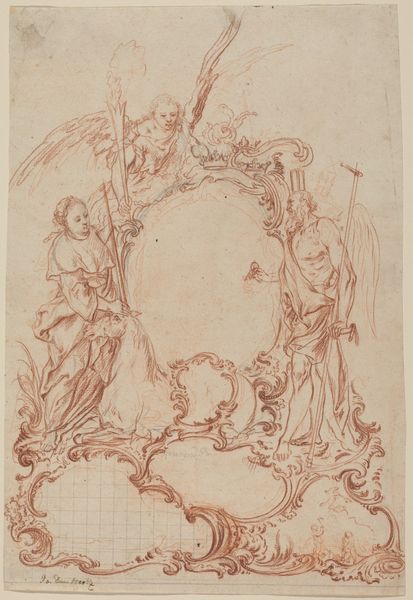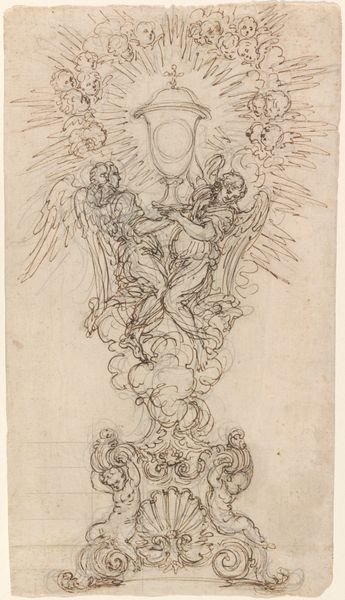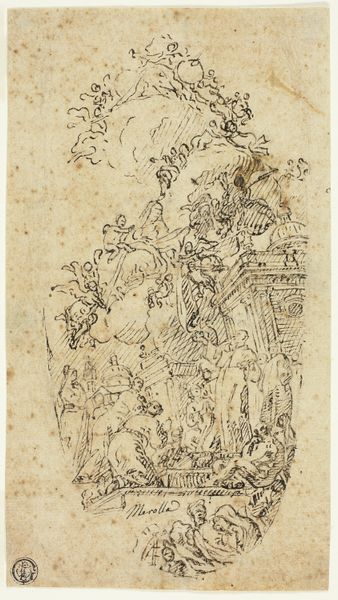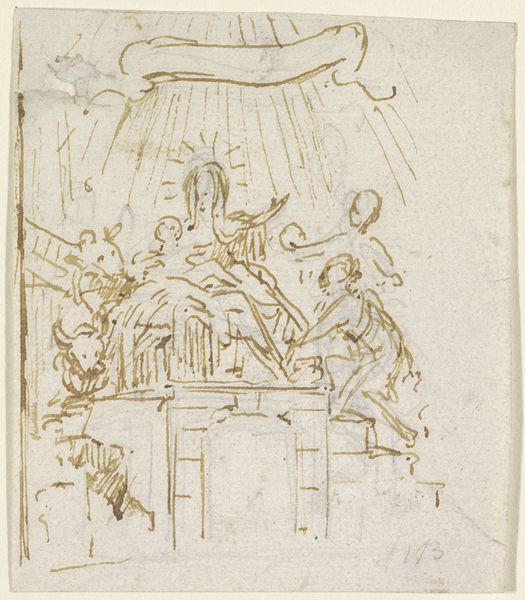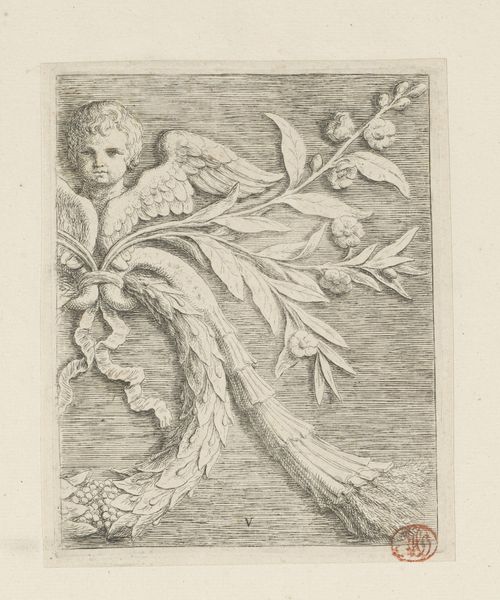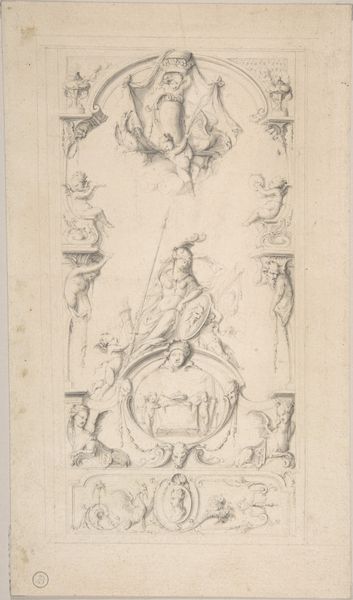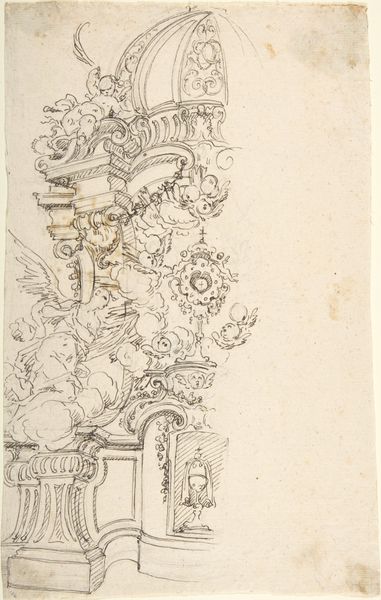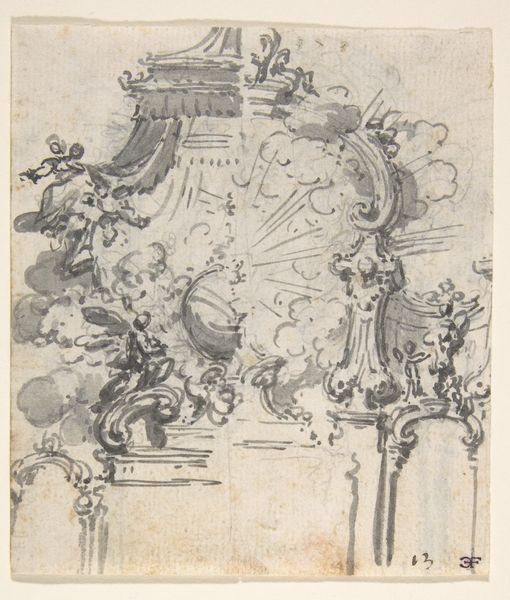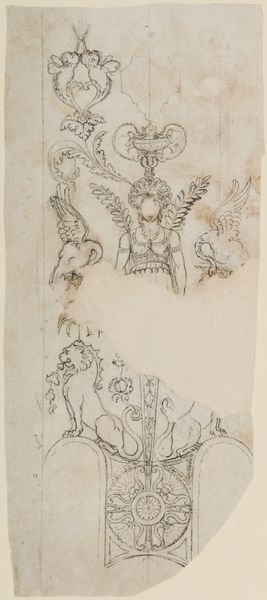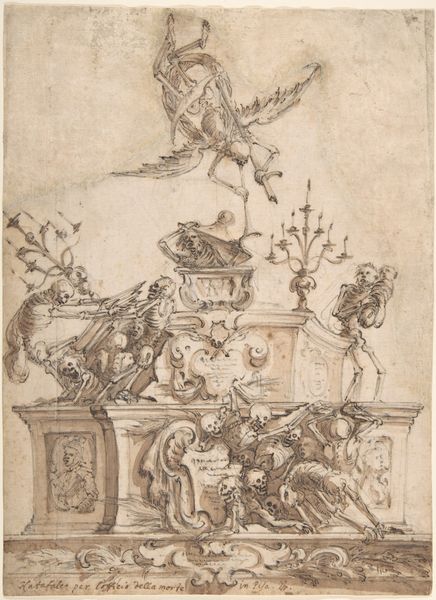
drawing, ornament, pencil
#
drawing
#
ornament
#
figuration
#
11_renaissance
#
pencil
Dimensions: sheet: 2 13/16 x 2 1/16 in. (7.2 x 5.3 cm)
Copyright: Public Domain
Curator: Here we have an intriguing drawing entitled "Design of an Urn with Figural Ornament," created anonymously sometime between 1600 and 1700. It resides here at the Metropolitan Museum of Art and is rendered in pencil. Editor: It’s striking. The asymmetry is… unexpected. A little top-heavy perhaps? The lightness of the pencil work almost gives it an ethereal quality. Curator: Precisely. Let's consider the material realities behind that lightness. Pencil, as a medium, was becoming increasingly accessible at this time, impacting drawing practices. What was previously the domain of chalk or ink opened to a broader audience. Do we see a shift in design production because of easier to acquire media? Editor: I see your point, yet can't dismiss the composition’s pure elegance. Note the careful arrangement of motifs—the cherubic face at the top, the overflowing basket of flora, the winged figures below—forming this delicate visual hierarchy. Semiotics are clearly at play, drawing upon familiar visual tropes. Curator: And tropes heavily laden with symbolism deployed in service to elite culture. The very notion of an “urn design” speaks to patronage. Ornament functioned to signal status and wealth through specialized artistic labor. Were such urns ever realised, or were these designs intended for a private collection of drawings? Editor: An interesting proposition, given its unrealized state. Perhaps, instead, its value lies in the inherent tension between design and form. This wasn't intended to simply showcase function; it embodies an ideal of beauty, referencing classical forms to signal erudition. Curator: That erudition serves the aims of a burgeoning market and culture industry for luxury goods. How readily would those elite consumers and owners embrace a hand sketched preliminary that emphasizes the making and the hand? Editor: You raise fascinating points regarding intention and reception, reminding us of the complex social and economic structures in place at that time. For me, personally, this remains first and foremost an exquisite object. Curator: Yes, an exquisite point from which to consider this image’s material life and historical impact!
Comments
No comments
Be the first to comment and join the conversation on the ultimate creative platform.

